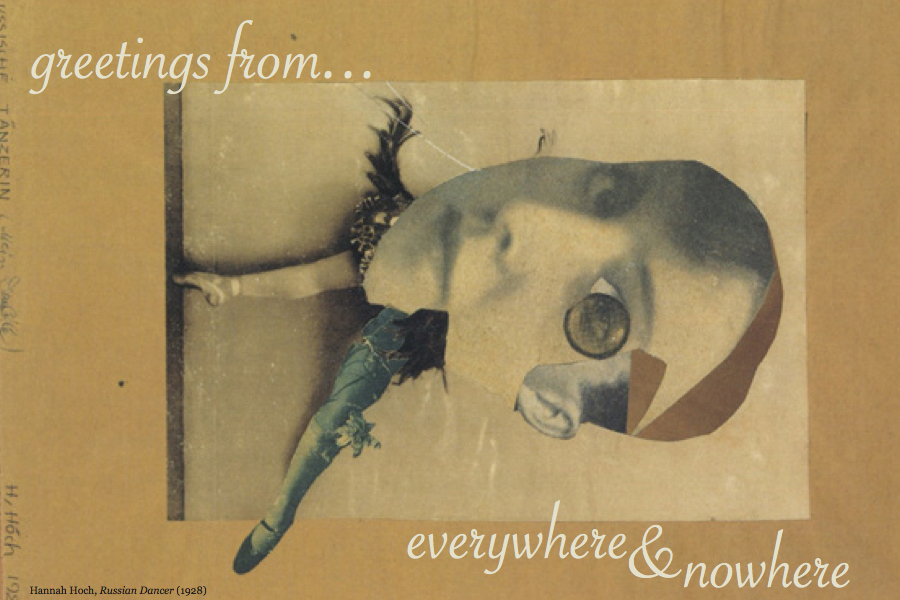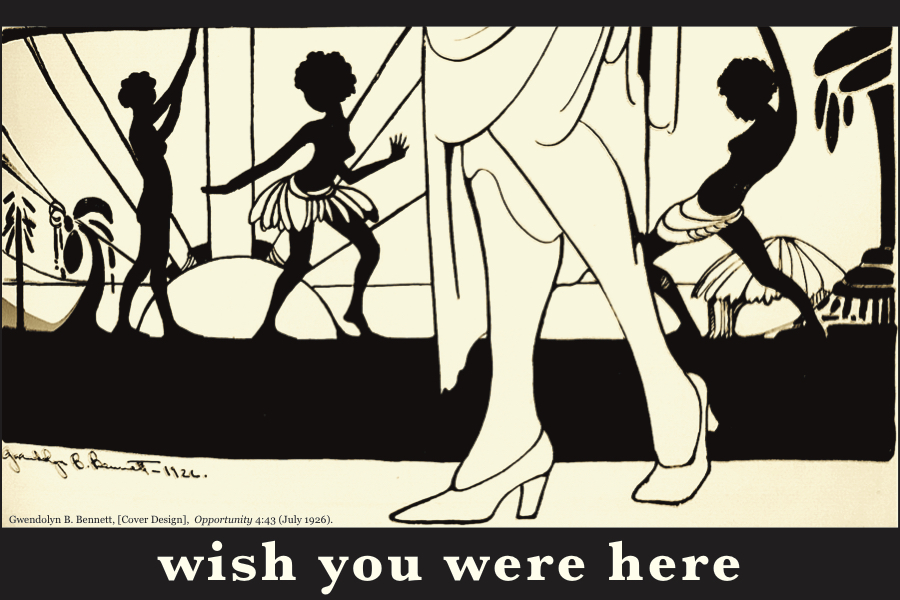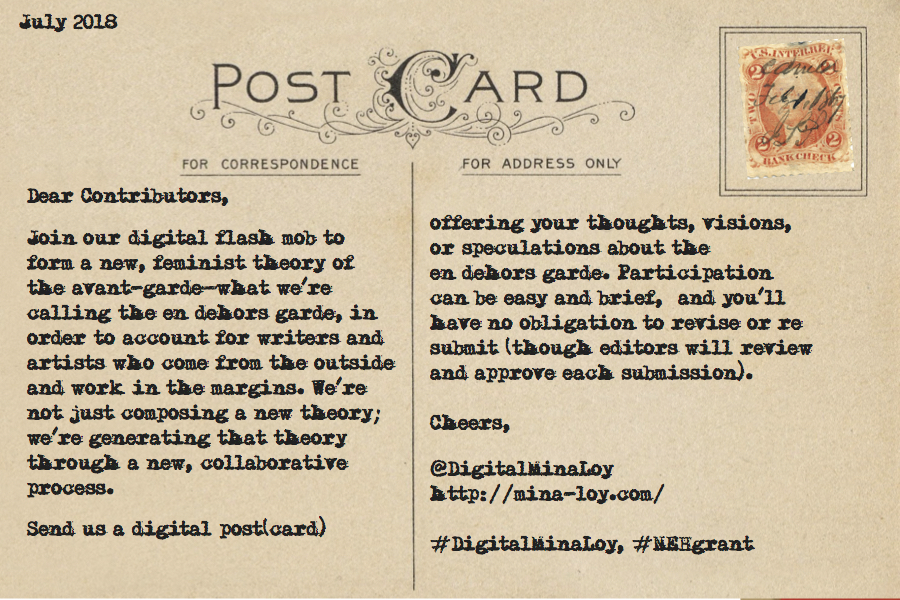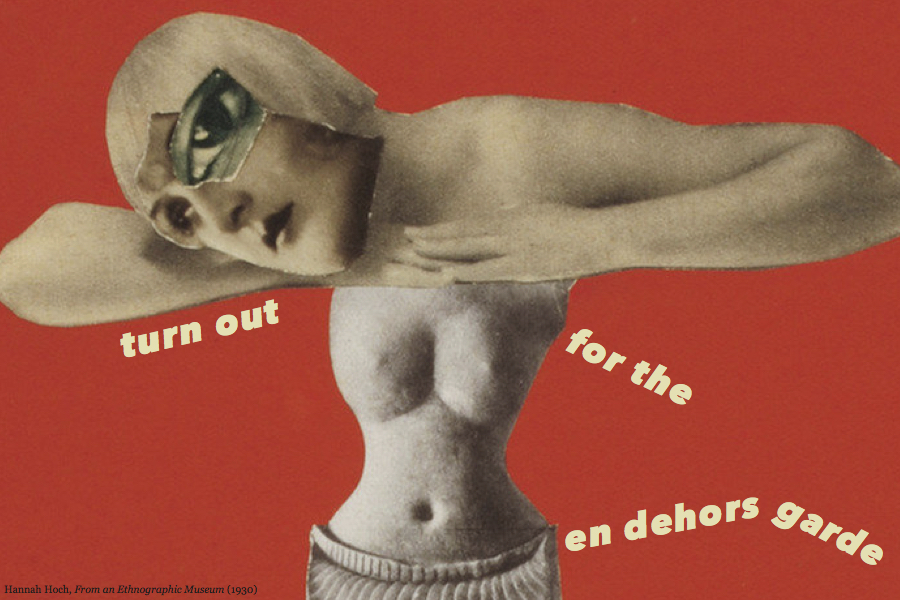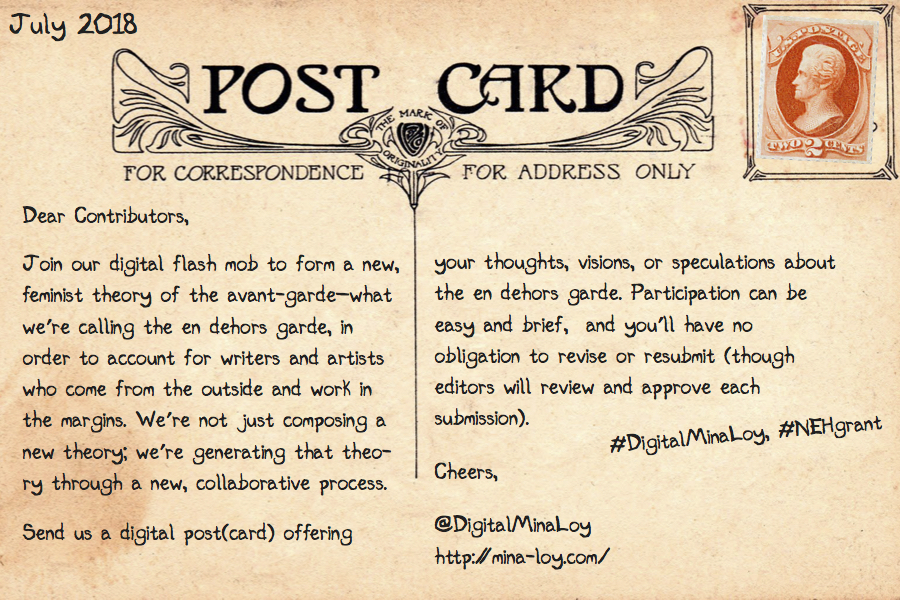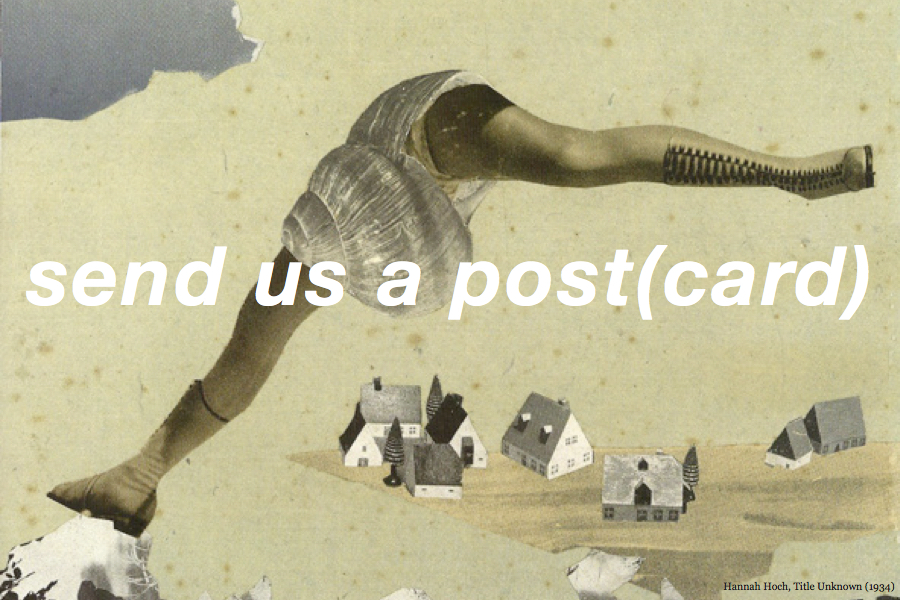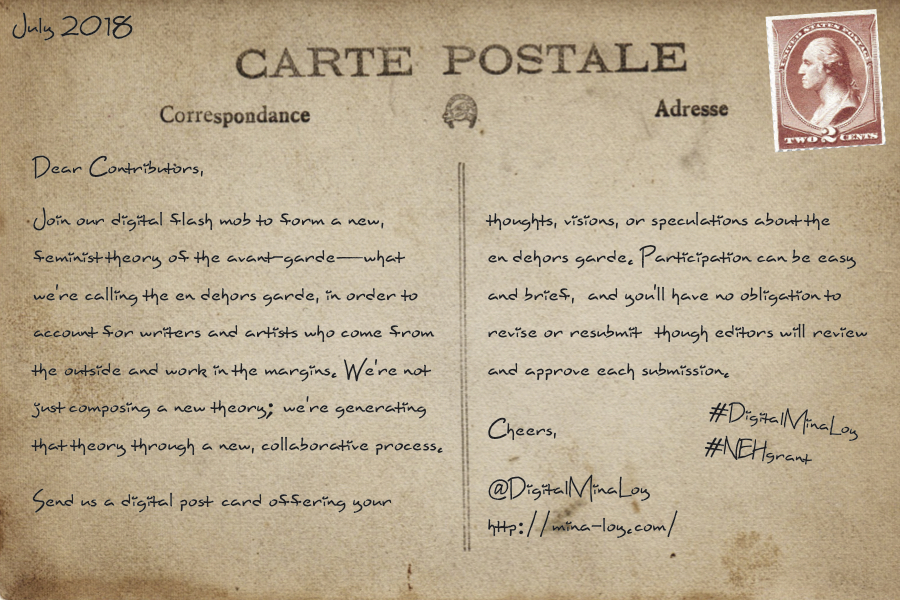The website was designed to be public facing from its conception, and the idea to collaboration with the public came to us early in the planning stages, when Susan Rosenbaum, Linda Kinnahan, Suzanne Churchill, and Andrew Rikard (Davidson ’17) met at the 2015 Modernist Studies Association conference in Boston. We were discussing theory of the avant-garde, as anyone would do at such a conference. Frustrated that existing theory of the avant-garde failed to account for Loy’s work, we decided to propose a more inclusive, feminist theory of the avant-garde. Actually, we said: “We won’t compose a theory of avant-garde,” but just as soon as the words came out of our mouths, we said, “Why not? Why have only men had the chutzpah to theorize the avant-garde?” So we got to work.
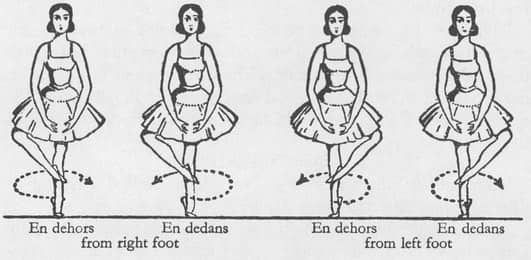
Because the term “avant-garde”—with its military origins and aggressive connotations—did not reflect the position or strategies of many women, artists of color, or other marginalized artists, we proposed a new term: en dehors garde. As Nancy Selleck (who suggested the term) explains, the term “en dehors” comes from ballet rather than warfare, and means “toward the outside” or “turning outward.” Rather than assuming a militant position at the forefront of culture, women and artists of color often created from the outside and turned outward, working strategically to transform the gendered, racialized cultures that excluded them.
We didn’t just want to compose a new theory of the en dehors garde; we wanted a new method of production, one that pivoted on the notion of turning outward.
In the summer of 2018 with expert help from Leah Mell (Davidson ’19), Mahalia Cooks (Fayetteville State ’19), and Alexandra Resnick (Duquesne ’19), we conducted a social media campaign, inviting students, scholars, artists, writers, and the general public to participate in a “digital flash mob.” We asked them to submit short position statements about the en dehors garde in the form of digital post(card)s. Our technological wizard Greg Lord designed a way to display the post(card)s in a randomized grid; users can select, arrange, and export post(cards) from the grid into their own theoretical formations. Via this production process, theory is not a fixed, unified, or finished argument, but a plural, elastic, and ongoing process.
During the flash mob, we received 70 post(card)s from the U.S., Canada, UK, and France, and watched our site stats grow from a monthly average of 50 to a record high of 4,450 in September. The experiment was a dizzying success. Of course, it didn’t produce anything resembling theory as we know it. Few of the post(card)s took the form of “position statements” or arguments that could be assembled into any kind of theoretical narrative. Many were collages like these:
Ultimately, our digital flash mob’s failure to produce theory as we know it may be the mark of the experiment’s greatest success: it invites us to think of theory in new ways, and to recognize that our feminist theory of the en dehors garde resides in the process not the product.
